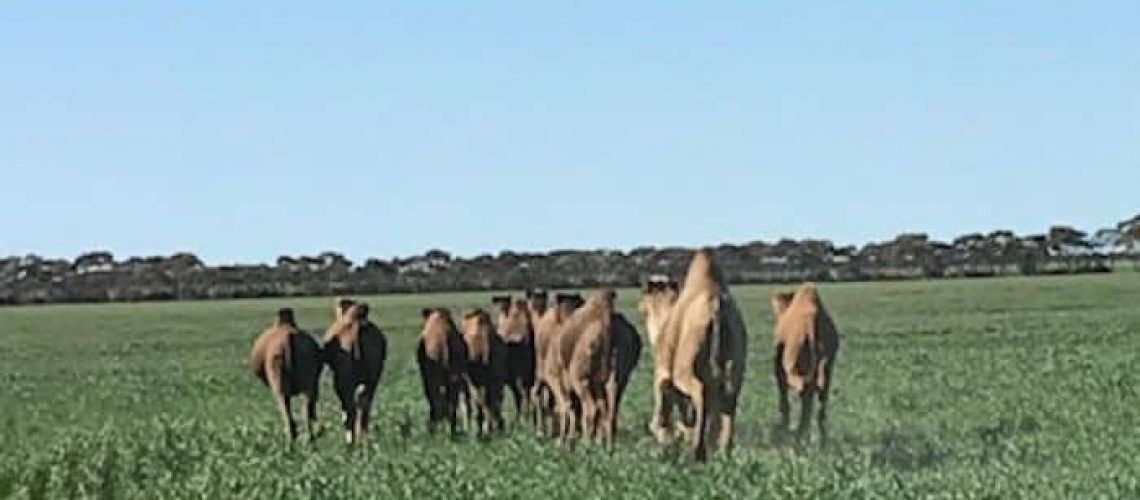The recent sighting of camels near Esperance provides an opportune time to remind the State and Federal Governments of their responsibilities to manage Crown Land and protect the State’s primary production zones.
This has been a growing problem for decades, today there is over one million feral camels stomping around not just the outback, but through fences into our Wheatbelt in Western Australia. This population has been growing by 8 per cent each year.
More of a concern is the impact camels will have in WA with nearly half of the herd residing in our state boundary; this is the largest feral camel population anywhere in the world. These numbers are scary when broken down, particularly for WA – the data outlines that we will have approximately 540,000 camels which breed at a rate of 8 per cent a year resulting in 43,200 new animals per year.
If this issue is left unresolved it will not take long to mount to unmanageable numbers, having a huge impact on our fragile desert environment and sending thousands into our farming areas when a big drought hits.
To tackle a pest issue of this magnitude, the government must offer a coordinated approach. There are already existing groups that could be incorporated to roll out successful management plans, including Recognised Biosecurity Groups, registered doggers, cell fencing and indigenous rangers. With the existing funding allocated with an additional $5m per year over 4 years; the State Government will be able to regain control of the reserves under their management.
There are 435 pastoral leases in Western Australia covering 86.5 million hectares which accounts for 36 percent of the state’s land area. The pastoralists that work these leases demonstrate some of the best practice in sustainable land management. The government should leverage off these people who are already working and living in some of the most remote areas of the state. This saves the state a vast amount of capital expenditure, but also values and empowers the land managers to undertake their land care practices.
Empowering the pastoralists further legitimises their business and bolsters their social licence. At a time where agriculture is caught in the brunt of political power throws, it is essential that the industry and the people within the industry are recognised and appreciate not just for their provenance, but also their contribution for the upkeep of our natural assets beyond the peri-urban fringe.
Government also has an opportunity to harness the benefits of science and technology to assist in the management of feral camels. WAFarmers encourages the State to deploy GPS collars on herds of camels to learn of their movements as they are recognised as a highly nomadic pest. By collating data on the camel’s movement patterns the State can be proactive in the placement of their management tools which ensure available funds are spent effectively while achieving maximum outcomes.
During a time where the state government is trying to generate revenue, there is a resource that we are often leaving to rot. WAFarmers encourages the State Government to look at pest management as a commodity that has the potential to generate a financial return. For example, camels and kangaroos offer skins that create leather goods, meat for human and pet consumption while new emerging industries are being identified with camel milk. The government and industry need to redefine what we are classifying as ‘pests’ and broaden our minds and leverage off the opportunities they present.











